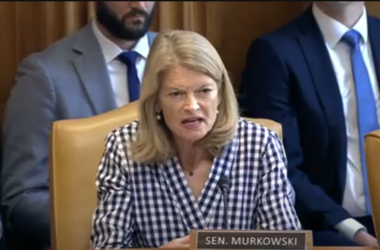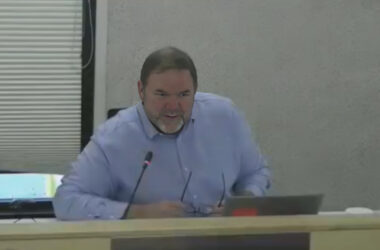The Kenai Peninsula Borough Assembly voted unanimously Tuesday night to approve Resolution 2025-025, setting new property tax mill rates for Fiscal Year 2026. The resolution includes across-the-board decreases in seven key service areas and the general fund, aimed at easing the tax burden on residents. It also approves a notable increase in Seldovia to preserve a valued community resource.
Introduced by Borough Mayor Peter Micciche, the resolution reduces the general fund mill rate from 4.30 to 3.85 mills and implements reductions in service areas including Central Emergency Services (down from 3.21 to 2.95 mills), Kachemak Emergency Services (from 3.66 to 3.26 mills), the Road Service Area (from 1.40 to 1.30 mills), Nikiski Fire (2.70 to 2.45 mills), Nikiski Senior Services (0.27 to 0.25 mills), and the North Peninsula Recreation Service Area (1.30 to 1.15 mills). In all, the cuts reflect a strategic rollback of property tax rates that were higher during periods of increased budgetary demand.
“We literally go over every column, every line of spend in these budgets,” said Borough Mayor Peter Micciche during Tuesday’s meeting. “There’s a reason why you see seven reductions. We’re not a bank. The only reason for the Kenai Peninsula Borough’s existence is to serve the people… at the best quality services at the lowest cost possible.”
Micciche said the cuts are part of a broader financial plan to bring fund balances into compliance within three years, and stressed that the administration adheres closely to borough ordinances when setting the rates. “We don’t just pick numbers out of a hat,” he said.
The lone increase was in the Seldovia Recreation Service Area, where the mill rate will rise from 0.75 to 1.00 mills. That move came at the request of Seldovia residents, who advocated for the increase to ensure the community pool can remain open through the winter months. The pool, a central gathering place in the remote coastal town, had faced potential seasonal closure due to funding shortfalls.
While most rate changes passed without controversy, an amendment proposed by Assembly Member Cindy Ecklund sparked discussion. The amendment, which ultimately failed, sought to reduce the Bear Creek Fire Service Area’s rate from 3.25 to 3.00 mills. Ecklund’s proposal was supported by several residents who testified or submitted written comments urging the borough to scale back what they called excessive funding in light of a 2007 bond that has since been largely paid down.
Former Bear Creek Fire Chief Mark Beals, who served in the department for over three decades, noted that the bond, initially supported by voters to fund a new fire station, was expected to cost taxpayers roughly $90,000 annually. With rising property values, the same 1.00 mill now brings in more than $285,000. Beals and others argued that the excess is being funneled into operating expenses and equipment purchases that were never approved by voters, such as the development of a duplicative ambulance service.
“I urge the Assembly to consider the significant impact this mill rate has on our community,” Beals wrote. “It’s time to reduce it and fulfill the commitment made to voters.”
Multiple residents in the Bear Creek Service Area voiced concerns, however, that the decrease would negatively impact fire departments’ ability to do its job effectively, and ultimately the Assembly chose to keep the mill rate for Bear Creek Fire at the level proposed by the administration. The amendment failed, and the resolution passed as originally drafted.
Mayor Micciche addressed the broader fiscal philosophy in his memo to the Assembly, writing that “unsustainable budgets eventually result in unaffordable mill and tax rates for our borough residents.” The approved resolution, he argued, is a step toward long-term financial responsibility.
With the June 15 statutory deadline approaching, the vote ensures the borough’s property tax rates are locked in for Tax Year 2025. The new mill rates take effect July 1, providing clarity to property owners and setting the foundation for the borough’s largest single source of revenue for the upcoming fiscal year.






